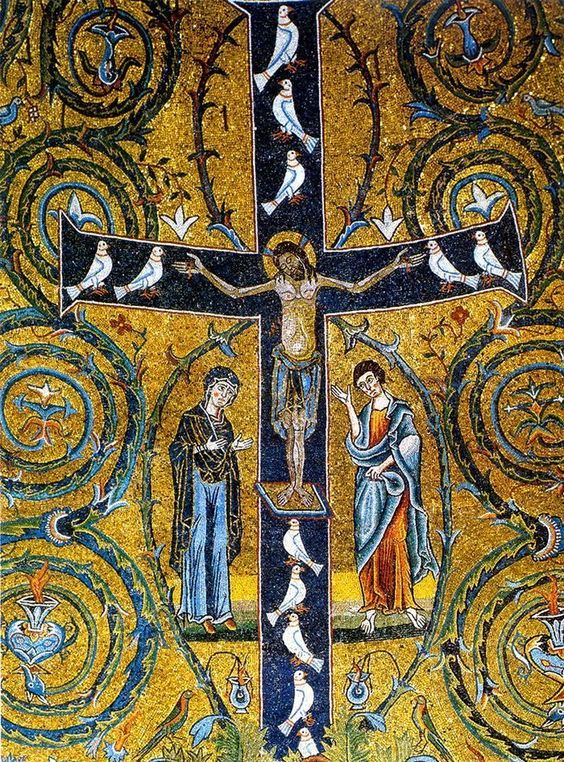Feast of the Cross

September 14
First Elevation of the Cross 325
The liturgical color of the feast is red
According to traditions, the Holy Cross was found by Saint Helena, the mother of Constantine the Great. Around 324 she made a pilgrimage to Jerusalem and had excavations carried out, in which the tomb was also discovered in addition to the cross. This was first reported in 325 by Eusebius of Caesarea. The records of Bishop Cyril of Jerusalem, Ambrose of Milan, Socrates Scholasticus and Theodoretus of Cyrrhus also date from the 4th century. From the year 383 there is an account of the religious Egeria, who made a pilgrimage to Jerusalem.
Second Elevation of the Cross 628
The second event took place in the year 628. Fourteen years earlier, that is, in 614, Jerusalem had been conquered by the Persian monarch Khosroe († 628). He robbed all the treasures from the churches and took the entire population with him into exile to Persia. Likewise, the Holy Cross was among his spoils. But in 628 the Greek emperor Heraclius (d. 641) in turn won the victory over Khosroe. And with great tribute, he solemnly brought the Holy Cross back to Jerusalem.
With the cross on his back, the emperor, who was quite old anyway, entered the city. But suddenly he was no longer able to put one foot in front of the other. At that time, the then Patriarch of Jerusalem, Zacharias (d. 631; feast February 21) saw in a vision how an angel instructed the emperor to take off his royal robes and, like Christ then, to take up the cross barefoot and humiliated. He told the emperor what he had seen. Promptly he discarded his fine festive outfit, and clad in poor barefoot robes, he took up the cross to carry it to Golgotha, where the Church of the Resurrection stands. And there was great joy in Christendom all over the world. All this took place on September 14 of that year.